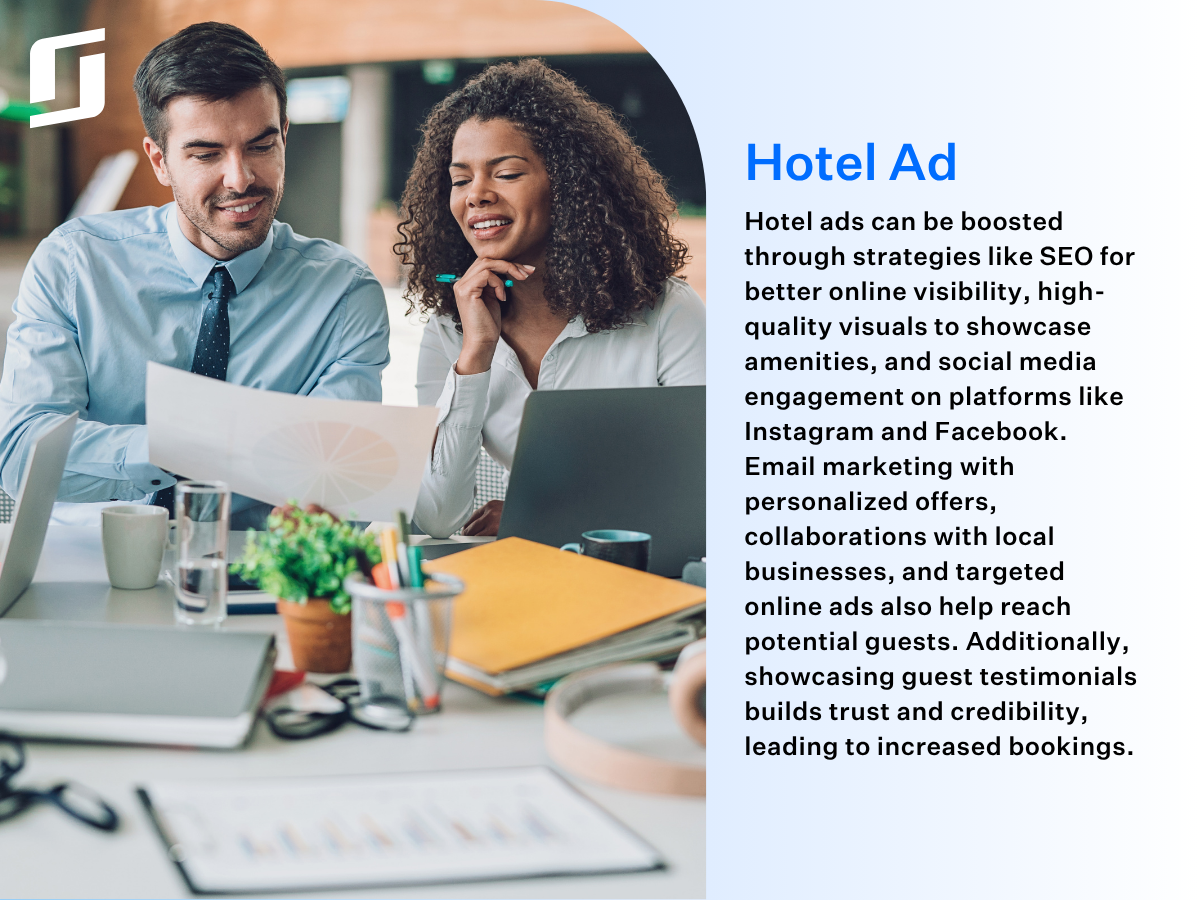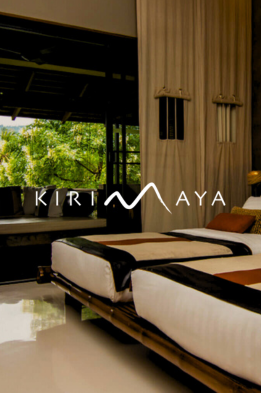What is a hotel ad?
A hotel ad is any paid placement used by a hotel to promote its rooms, offers or brand, typically through online platforms like Google Hotel Ads, OTAs (online travel agents), metasearch engines, and social media channels. These ads are designed to appear in front of potential guests at the moment they’re planning or booking travel.
But not all hotel ads are created equal. A small banner on Facebook is very different from a dynamic rate listing on Google or a sponsored placement on Booking.com. Each platform has its own format, audience behaviour and rules. That’s why getting ads right is about timing, targeting, and trust.
A well-executed hotel ad helps you reach the right guests, at the right time, with the right rate. And when managed properly, it can drive direct bookings, reduce reliance on high-commission channels, and increase your overall profitability.
Think of it as one piece of a broader digital strategy; one that works best when integrated with your booking engine, pricing tools, and property management system.
In this blog, we’ll show you the hows and whys of ads in the hotel industry, and practical ways for your business to master it.
Table of contents
Why is hotel ad parity crucial?
When a guest sees your hotel advertised on Google at $180, then clicks through to an OTA and sees it for $160, their booking choice is almost made for them.
That’s the impact of rate parity, and why it matters.
Hotel ad parity means your room rates and availability are consistent across all advertising and distribution channels. If your ads show conflicting prices, not only do you risk losing bookings, but you also damage trust. Guests start to question the value of booking directly. Worse, some platforms may penalise your property’s ranking for not meeting rate consistency requirements.
Inconsistent rates can also lead to wasted ad spend. Imagine paying for traffic on an ad that ends up sending guests elsewhere because they found a better deal on another site. All that effort is undone by a mismatch.
Maintaining parity helps protect your revenue and reputation. It allows your hotel to compete fairly, without confusing guests or undermining your direct channels. And when combined with tools that monitor your listings and flag discrepancies, it becomes easier to control what the market sees, no matter how many platforms you’re on.
Simplify hotel ad management with SiteMinder
Take control of your ad performance, rate parity, and campaign compliance across every platform.
Learn more
Key hotel ad compliance
Ad compliance might not sound exciting, but it’s one of the fastest ways to lose visibility, or even your entire ad account, if you get it wrong.
Each platform has its own rules. Google has strict policies about destination mismatches, misleading offers, or inaccurate availability. OTAs like Expedia and Booking.com may reject your listing if your ad copy or images don’t meet their standards. And social platforms will penalise ads that breach their content or landing page policies.
That’s why hotel ad compliance is about more than ticking a few boxes. It’s about knowing what each platform expects, setting up your ads properly, and avoiding costly disruptions.
Some of the most common compliance issues include:
- Mismatched rates or availability between your ad and your booking engine
- Landing pages that don’t work or don’t reflect the ad content
- Missing disclosures such as taxes or fees in your advertised price
- Overuse of promotional language that gets flagged as misleading
The fix? Use tools that integrate your property management system with your ad platforms, so your rates and availability update automatically. Set up alerts that flag ad disapprovals early, and keep a checklist of ad requirements for each channel your hotel uses.
When compliance is part of your day-to-day process, not an afterthought, you protect your reach and make the most of your ad spend.

How to develop an effective hotel ad strategy
An effective hotel ad strategy isn’t about being everywhere at once. It’s about showing up in the right place, at the right time, with a compelling offer that fits your guest’s needs. Here’s how to build a strategy that delivers results.
Identify your target audience and goal
Start by getting clear on who you’re trying to reach. Are you targeting last-minute weekend travellers? Corporate bookers? Families planning school holidays? Your ad messaging, visuals, and channels should all reflect that. Be specific. A well-defined audience is easier to reach and more likely to convert.
Define your goal early, whether it’s increasing direct bookings, promoting a seasonal offer, or filling shoulder nights. Your targeting and tracking will hinge on this.
Choose the right channels
It’s easy to overspend across too many platforms. Focus instead on the ones that match your audience. Google Hotel Ads, for instance, continues to dominate for intent-based travel searches, while platforms like Instagram are more effective for brand building and visual inspiration. In fact, 61% of travellers have booked a hotel after seeing it on Instagram.
Metasearch advertising is also gaining traction. It accounted for 39.2% of ad-driven direct revenue for D-EDGE hotels in 2023, a 69% increase since 2019.
Set your ad budget
Don’t guess. Look at your booking window, average daily rate, and current occupancy trends to decide where your ad spend will have the most impact. A recent survey found 33% of hoteliers planned to invest between $50,000 and $100,000 in digital campaigns in 2024, with 21% aiming even higher.
Ensure rate parity
Rate parity isn’t just a compliance issue, it’s a trust issue. When your rates vary from platform to platform, guests lose confidence in your direct channel. This not only reduces bookings but can hurt your ad performance if platforms deprioritise inconsistent listings.
Aim for consistent pricing across your direct site, OTAs, and metasearch platforms. Tools that sync pricing between your PMS and your ad channels can make this far more manageable.
Monitor performance regularly
You can’t improve what you don’t measure. Use dashboards and integrated tools to track clicks, conversions, return on ad spend, and channel performance. Schedule weekly reviews so you can tweak budgets, pause underperforming ads, and test new variations.
And remember, online bookings are expected to make up 80% of total hotel revenue within the next three years. That makes regular monitoring not just a nice-to-have, but essential to staying competitive.
Top hotel ad examples
The best hotel ads speak directly to the kind of guest a property wants to attract. From luxury escapes to budget city stays, a great ad delivers relevance, emotion, and a reason to book.
Here are two standout examples that show how targeted messaging can make all the difference.
Luxury hotel ad: Twenty Sundays
Twenty Sundays is a boutique luxury property in California that ran an eye-catching display ad campaign using minimalist visuals and a calming colour palette. Their messaging focused on peace, privacy, and slow living—perfectly aligned with their audience of urban professionals looking for a quiet retreat.
One of their ads featured a single line: “Your out-of-office reply just kicked in.” Combined with imagery of a serene poolside setting, it created an immediate emotional pull.
By keeping the copy sparse and evocative, they captured the essence of a luxury hotel ad: less about deals, more about experience and aspiration.
Hotel Trivago ad: “Hotel? Trivago.”
Trivago’s long-running campaign remains one of the most recognisable in the travel space. Their iconic tagline, “Hotel? Trivago,” positioned the platform as the go-to place to compare hotel prices in seconds.
What made the ads effective was their clarity. The visuals were clean, with price comparisons front and centre. There was no fluff, just a clear message for deal-hunters and spontaneous travellers. It’s a textbook example of how repetition, simplicity, and brand consistency can turn a basic Hotel Trivago ad into a household phrase.
Whether you’re building brand awareness or chasing conversions, these examples show that the best hotel ads are tailored to purpose. Use them for inspiration, but always shape your campaign around your own audience, platform, and goals.


